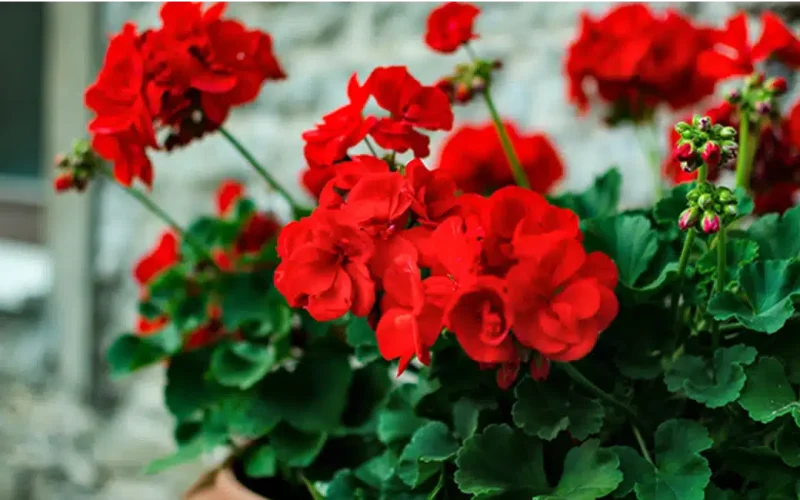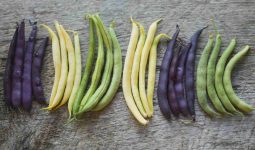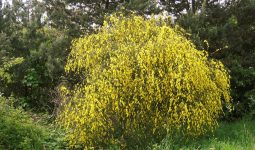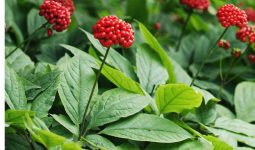A quick and easy technique to keep these pests at bay is to grow plants that repel wasps.
In addition to providing your yard with stunning color and changing seasonal interest, they also have a strong scent that, although generally pleasing to humans, effectively repels these bothersome insects.
Many are common garden plants and practical herbs, such as marigolds, eucalyptus, and pennyroyal.
They may be useful to humans and are worthy of a prominent location in your backyard.
They are also excellent for removing wasps and are perfect for putting into flavor-packed recipes, beverages, and medicinal therapies.
Position them strategically throughout your yard and house by planting them in pots, hanging baskets, and window boxes as flower bed ideas.
You can relax and enjoy your meal in a wasp-free environment if you place one or more modest planters in the middle of your outdoor dining ideas.
Below is a list of the best plants that repel wasps.
1. Rosemary

Rosemary is an evergreen plant with many applications in the kitchen and medical fields.
It may be used to season various foods and has a pleasant scent. The plant is also well-known for its capacity to deter wasps, however.
Rosemary is one of the plants that repel wasps since its strong scent may cover up the smell that draws them in.
Additionally, rosemary is a sturdy plant that can survive in hot, dry circumstances, making it simple to care for in a garden setting.
Since the leaves of the rosemary plant are so thick and resistant, wasps have a hard time penetrating them to collect nectar.
The plant creates a sticky resin that is hard for wasps to penetrate. Combining these qualities makes rosemary one of the best plants that repel wasps.
2. Basil

Basil, often known as sweet basil, is a plant whose leaves are grown extensively for food.
This is one of the plants that repel wasps and are mostly used in cooking. There is a long history of using basil.
In ancient Greece, it was referred to as the “royal herb” and used in religious and medical rituals.
Low-growing basil grows well in warm, tropical settings. Containers or window boxes provide excellent planting locations for basil.
It has been grown for more than 4,000 years in India and other tropical parts of Asia, where it is native.
The flowers are big, white, and placed on a terminal spike. The pistil and the four stamens of this species of Lamiaceae are placed above the inferior lip of the corolla rather than being forced beneath the upper lip.
In several parts of Asia, other basil varieties are produced. They often taste more like cloves than the basils from the Mediterranean region. The holy basil or tulsi species are the most well-known.
Traditional remedies for the common cold, muscular aches, bug stings, bronchitis, and influenza include sweet basil.
The advantages of basil oil, among other essential oils for health, have been extensively studied.
According to studies, it possesses strong anti-cancer, anti-viral, anti-microbial, and antioxidant capabilities.
3. Peppermint

The “holy grail” of all-natural deterrents, peppermint is often regarded as one of the powerful plants that are used to repel wasps.
This plant is essential in your garden since wasps don’t appreciate the high menthol content and minty fragrance.
It’s simple to cultivate and has a nice scent that helps keep wasps away from your home. You may also create a repellant spray by combining its oil with dishwashing liquid.
Effective choices include spearmint and ginger mint, whose essential oils have been reported to deter yellow jackets and paper wasps.
Natural wasp control will allow you to engage in outdoor activities peacefully.
4. Eucalyptus

An oil from the eucalyptus tree is often used to lessen pain and inflammation.
Eucalyptus oil may also reduce congestion, sometimes in cold and flu remedies. It’s a good extract since some say it may help them relax and reduce stress.
The minty and lemony scent seems extremely pleasant, common in soaps and even mouthwashes.
Wasps and other insects, however, don’t like it. This is one of the plants that repel wasps due to its overpowering scent.
In reality, the scent of eucalyptus deters not just wasps but also other insects, including flies, mites, and mosquitoes.
So if you have a lot of room in your backyard, this tree is well worth your attention.
On the other hand, fruit trees can actively attract wasps, so consider where to position them to keep wasps away from places you visit.
Outside, this tree enjoys warm, humid weather with no temperature drops below 50°F. Best conditions include full sun and protection from brisk breezes.
Remember that they may grow fast, so have a good set of pruning shears on standby. If you have kids, avoid this plant since eucalyptus oil is poisonous if consumed.
5. Pennyroyal
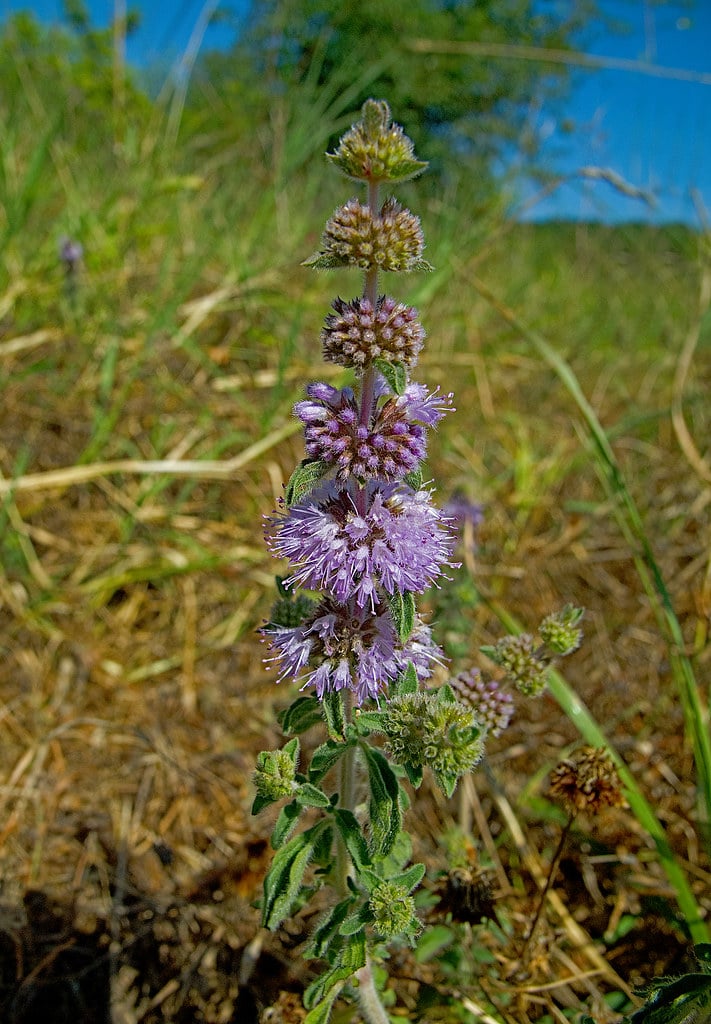
The Middle East, Europe, and North Africa are home to the perennial mint known as pennyroyal.
The Americas, several regions of Asia, Mozambique, New Zealand, and Australia are among the places it has been introduced. In Australia and New South Wales, it is just a small weed.
The stems of this perennial plant are upright and creeping. When the stems are airborne, they have hair; when immersed, they lack hair.
The length of the leaves varies from 0.4 to 1 inch to 1 to 2.5 cm further up the stem.
The leaves are narrowly oval to elliptic in shape, with a rounded tip, tapering to an acute base, and whole to finely cut edge. The flower has 5 long lobes and is 2–4.5 cm (0.8–1.8 in).
They have a large white hairy tuft in the neck and an external appearance of purple, hairy, and speckled with glands.
It releases a strong mint scent that repels wasps and other insects when crushed. It spreads obstinately and thrives in damp and poor soil.
These fast breeders should be in pots to prevent them from taking over your garden.
Both an insect repellant and an abortifacient are made from pennyroyal. It is poisonous when consumed and related to liver damage, convulsions, and death.
Other monoterpenes, including the volatile oil pulegone, bring this on. However, pennyroyal extracts should never be consumed. They are utilized in aromatherapy.
Pulegone’s poisonous byproducts are detoxified by glutathione, and Pulegone should be given N-acetylcysteine if it is unintentionally ingested.
6. Mint and Spearmint

The fragrant scent of fresh mint makes them one of the best plants that repel wasps.
There are several types to grow, like both full sun and partial shade, each with unique taste and traits.
Two of the strongest mints, peppermint and spearmint, are recommended for planting to deter wasps.
Before withering to the ground in the autumn, these herbs will shoot up in the spring to a height of around 3 feet (1 meter).
The stems become loose as they develop and start to root where they contact the ground, so over time, enormous clumps will be created.
It is recommended to plant mint in big pots or containers if you like to keep them under control.
7. Marigolds

Marigolds are a popularly grown, blooming, herbaceous annual or houseplant distinguished by their enormous flowerheads.
They often feature large, double-globular flowers that are 2 – 4 inches (5.1 – 10.2 cm) in diameter and appear in different colors of orange, yellow, and hints of white. They usually grow 1 – 4 inches (2.5 – 10.2 cm) tall.
Pinnate leaves grow on angular, glabrous stalks. Old flowers should be deadheaded since they are heavy and might break the stems, and tall types may need to be staked.
Wasps stay away from the flowers and leaves because of their strong spicy scents making it one of the best plants that repel wasps.
The triploids bloom year-round because they are unaffected by the summer heat. Marigolds may be planted in beds, containers, and along margins.
8. Cucumber

A vegetable with a wide range of uses, cucumbers may be used in salads, in beauty products, and even as a natural wasp repellant.
Cucurbitacins, a molecule that gives cucumbers their bitter flavor, may deter wasps from visiting your crop.
Due to their acidity and bitterness, insects often avoid cucumber peels as they feed on plant debris and leaves.
You may effectively deter wasps from your garden by scattering cucumber peels there, and for further security, you can even grow cucumbers over a trellis.
Furthermore, as cucumbers are hardy plants, you may profit from this wasp-repelling plant wherever you reside.
9. Geranium

There are more than 600 species of Geraniaceae worldwide, from tiny herbs to succulent shrubs.
The genus Pelargonium contains the garden geranium. In North America and Hawaii, there are 50 documented species and variants, including weeds that have been imported.
A thin layer of soil often hides the thick rhizomes that the geranium develops from.
Depending on where they are, flowers typically bloom from April until July. Due to the fruit’s form just before it discharges, its seed is called the crane’s bill.
The fruit normally has five parts that come together to create a point, like the beak of a crane.
The parts of the ripening fruits leap upward and discard the seed. Forests, pastures, thickets, and meadows all contain geraniums.
Geraniums are a traditional garden plant that is a gardener’s all-time favorite. They may be cultivated in hanging pots, beds, window boxes, and borders.
Its scent deters wasps through the compounds in the oil molecules, such as geraniol, linalool, citronellol, and nerol.
The essential oil is widely sought after for its alleged health advantages, which include easing stress, boosting immunity, promoting healthy skin and hair, and lessening the intensity of nosebleeds. This is one of the best plants that repel wasps.
10. Lemongrass
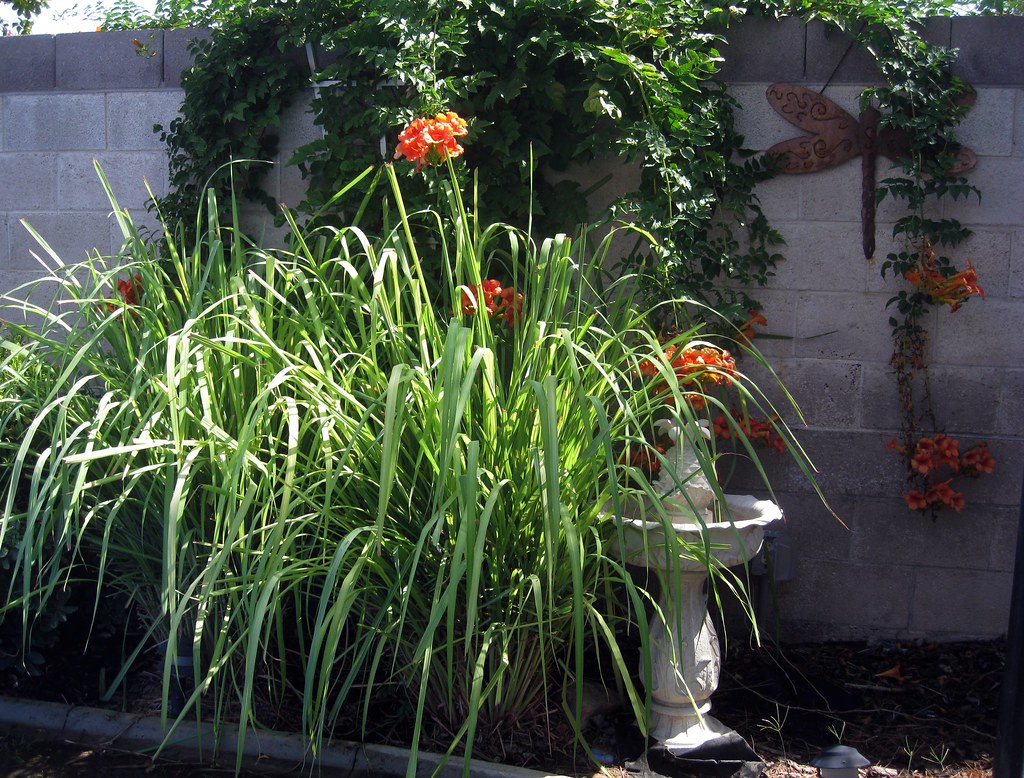
Cymbopogon plants are tall perennials that develop quickly with a tuft of lemon-scented leaves emerging from the annulate and sparsely branching rhizomes.
It expands to a maximum height of 1 m (3.3 ft) and a maximum breadth of 5–10 mm (0.2–0.4 in).
It features bulbous stems that expand the size of the clump as the plant develops and bluish-green leaves that don’t set seed.
The leaves are long, glabrous, glaucous green, linear, tapering upward and along the edges, with a short ligule and tightly clasped sheaths at the base, thin and divided at the distal end.
Both kinds emit a strong lemon scent that scares away insects. Soaps, deodorants, and cosmetics may be scented with lemon grass oil.
A yellowish-colored, very scented liquid oil known as cochin oil is produced by steam distilling dry leaves.
Cochin oil’s powerful chemical makeup is thought to be responsible for its qualities.
The antibacterial and insecticidal active components include myrcene, limonene, citral, geraniol, neral, nerol, citronellol, and geranyl acetate.
This oil fights against bugs, fungi, and germs. The compounds in the oil may have antioxidant effects, enhance blood sugar and cholesterol levels, lower fever, stimulate the uterus and menstrual flow, decrease pain and swelling, and reduce inflammation.
11. Wormwood

The phrase “wormwood,” which means “keeping a clear mind,” comes from the German word “Wermut.
Absinthe, made wood, absinthium, and absinthe wormwood are more common names for this plant. It is a perennial shrub that reaches an 80 cm (2.6 ft) height and width.
The leaves are alternating, widely oval, silvery-green, and finely split into slender segments.
Lower leaves are often smaller and more slender, whereas basal leaves are typically broader and deeply lobed. Silver hairs cover the surfaces on both sides of the leaf.
It feels very smooth to the touch, and most leaves have a strong scent that keeps wasps away, making it one of the best plants that repel wasps. It’s simple to cultivate this plant in a sunny, well-drained location.
It grows well in garden beds, borders, and rock gardens, among other places. Wormwood was brought to the United States in 1841 despite being a native of Europe.
Its negative consequences from usage in alcoholic beverages like vermouth and absinthe led to its prohibition at the start of the 20th century.
Although some people use wormwood for digestive issues, osteoarthritis, Crohn’s disease, renal ailments, and bug stings, it includes the chemical thujone, which may induce seizures at large dosages.
12. Common Thyme
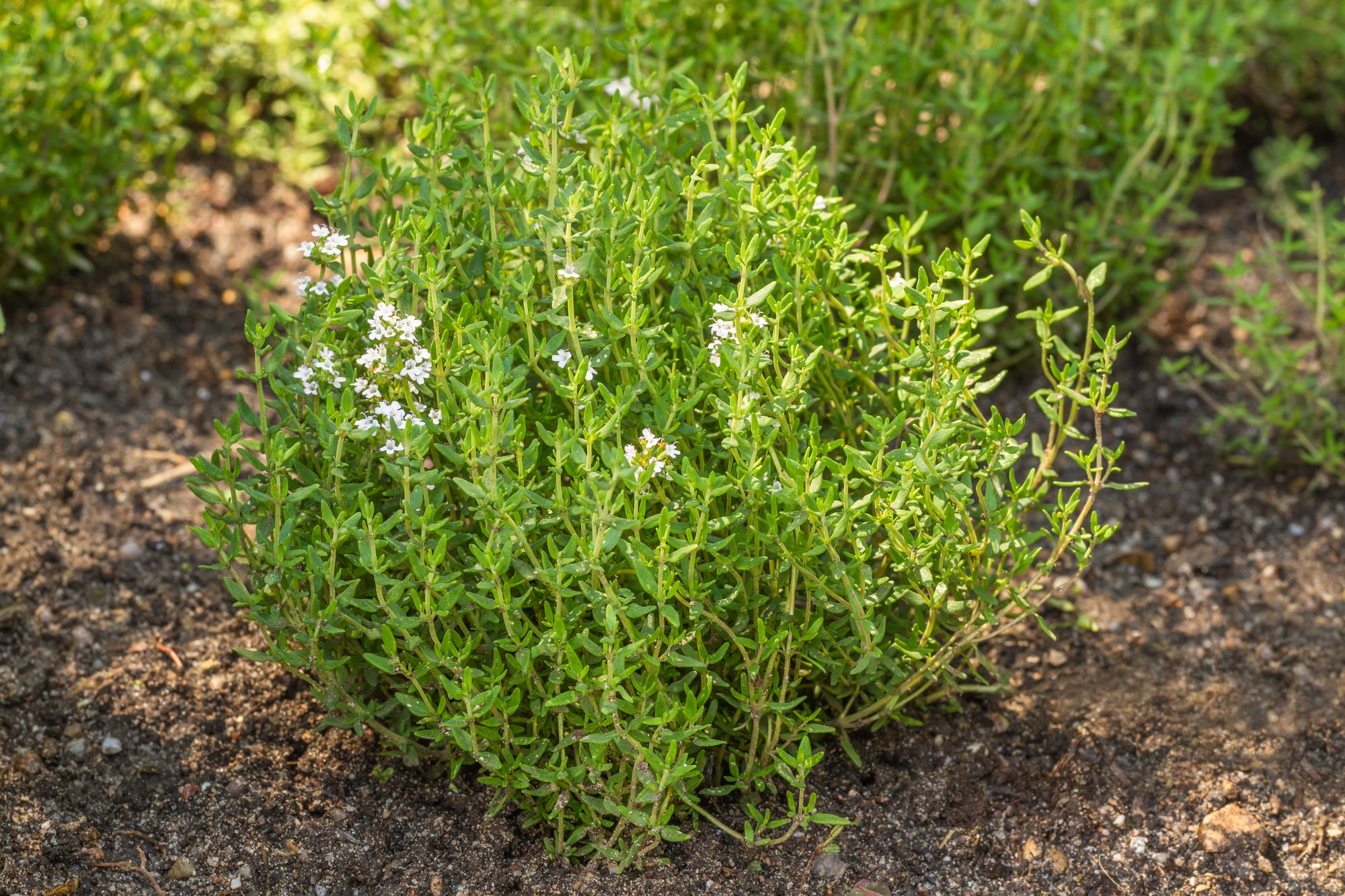
The common thyme is a low-growing dwarf shrub often grown annually but can survive as a perennial in warm areas.
Thyme is grown all over the globe and is indigenous to Eurasia. Both meals and Benedictine liqueur utilize it as flavoring.
Thymol, an essential oil from it, is used in dentifrices and perfumes. Many are cultivated as decorative ground coverings.
Thyme grows to a height of 8 cm (3 in) and spreads over time by roots stems to 30 cm (12 in).
It likes full sun, adequate drainage, and dry, rocky soil to grow. Thyme may be grown in beds and borders, cottage gardens, containers, and Mediterranean gardens, among other places.
The woody stems of thyme feature simple, oppositely placed, oval to linear leaves.
The small tubular flowers’ whorls, often white or purple, are formed along the stalks. Although wasps hate them, bees are drawn to the blossoms.
The taste and scent of thyme are at their peak when the leaves are young and fresh. Be careful to cut off any overgrown foliage for a dependable wasp deterrent.




